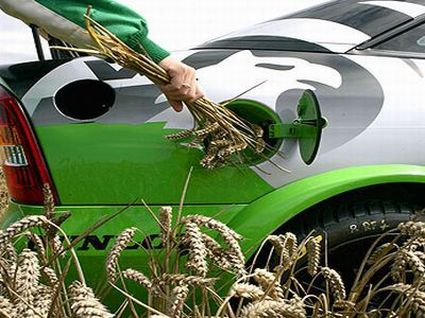Biomass is an interesting concept and a vital part of our alternative energy possibilities.
Biomass: Plant material, vegetation, or agricultural waste used as a fuel or energy source. American Heritage Dictionary 2006
Generally, the term biomass refers to biological material which is living or recently dead. When you put sticks together and build a fire that you use to cook meals, that is a use of biomass. It would be accurate to say that biomass has been central to the advancement of human civilization.
In fact, biomass served as the primary source of energy though the ancient world, at least until “modern” societies engaged in widespread deforestation.
Often, when you find the term “biomass” used, it is referring to plant material which is grown specifically for use as a biofuel. It can also include plant or animal matter grown especially for use in the production of fibers, chemicals, or heat. You could also use biodegradable waste products that are burnt as fuel. That would be biomass.
One would think of fossil fuel as a biomass, since it was once, eons ago, biological material, but it is not considered as such. Even though the material was originally biomass, it has been out of the cycle long enough to be considered a geological material. A more proper definition of biomass would consider fossil fuels as not being biomass because they contain carbon that has been “out” of the carbon cycle for a very long time. So now their combustion would disturb the carbon dioxide content in the atmosphere.
Any written work on agriculture would let you know that energy crops are chosen very specifically, and are chosen for the purpose of energy production. The different agricultural species are selected to minimize labor, for energy requirements, as well as their environmental impact.
You will find that energy crops will provide numerous benefits over food crops, but especially this; energy crops provide four to five times more energy than is required to produce them. Put more simply, you could say that relatively little energy is required to generate a substantial energy output. While food crops require a more intensified energy and resources to convert a seed into a usable (eatable) product.
The environmental benefits are just as irresistible. Since many of the energy crops are planted and replanted infrequently, you will find less soil erosion and environmental damage. You would find food crops (corn or wheat) are not only replanted and harvested each year, also they require substantially more chemical fertilizer, labor and energy inputs.
This means that food crops will consistently deplete the soil of valuable nutritients. Energy crops, on the other hand, have deeper roots (such as grasses) and build up humus while adding nutritients, including nitrogen, to the soil.
As an added bonus, when well managed, these energy crops provide a habitat for wildlife because energy crops usually have greater plant diversity.
For the American society, biomass provides another important benefit. We all expect that fuel cells will provide a likely replacement for the internal combustion engine. In the meantime, biomass may provide a vital link in this transition. Going from fossil fuels to a hydrogen economy will mean a significant amount of economic dislocation. Ethanol is liquid oil. It is produced from biomass and is a valuable additive in petroleum based gasoline.
Today we find that the ethanol is produced most often from corn kernels. This is a carbohydrate-based product and has a relatively simple chemical structure. While it seems to be a relatively efficient additive, it has proven to be a disaster in the world food market.
Many environmentalists do not support the corn based ethanol. While many of the energy crops are relatively benign, corn based is not as it requires large inputs of energy, labor, and chemicals and, most of all, water.
Many other ethanol production methods promise better results. For example, converting bagasse (a byproduct of sugar production), rice straw, and tree cuttings into ethanol has been promising. If these efforts are successful, then ethanol could at last become an important and cost-effective method of reducing gasoline consumption.
“Scientists around the world are progressively developing new methods for producing ethanol using cellulose-based resources with the hope of discovering more cost efficient and environmentally benign options.” (Powering our Future, Alternative Energy Institute Kimberely K Smith 2005)
Cellulase is an enzyme which is extracted from bacteria to break down cellulose which can be fermented to form ethanol. Professor Kathleen Danna at the University of Colorado, Boulder, has been working on processes to genetically extract bacteria more inexpensively, transplanting them into plants. If successful, this could by itself reduce petroleum imports by offsetting them with domestically produced, price-competitive ethanol, produced from cellulose-based products. We are talking world-wide here.
The dramatically important possibilities on this are subdued by the controversy brewing. This controversy is about the soundness and safety of using the developing genetically modified organism.
Have you considered the possibilities of how you can be a part of the dramatic changeover from fossil fuel alternative energies? Can you afford not to be at least interested in the methods?

